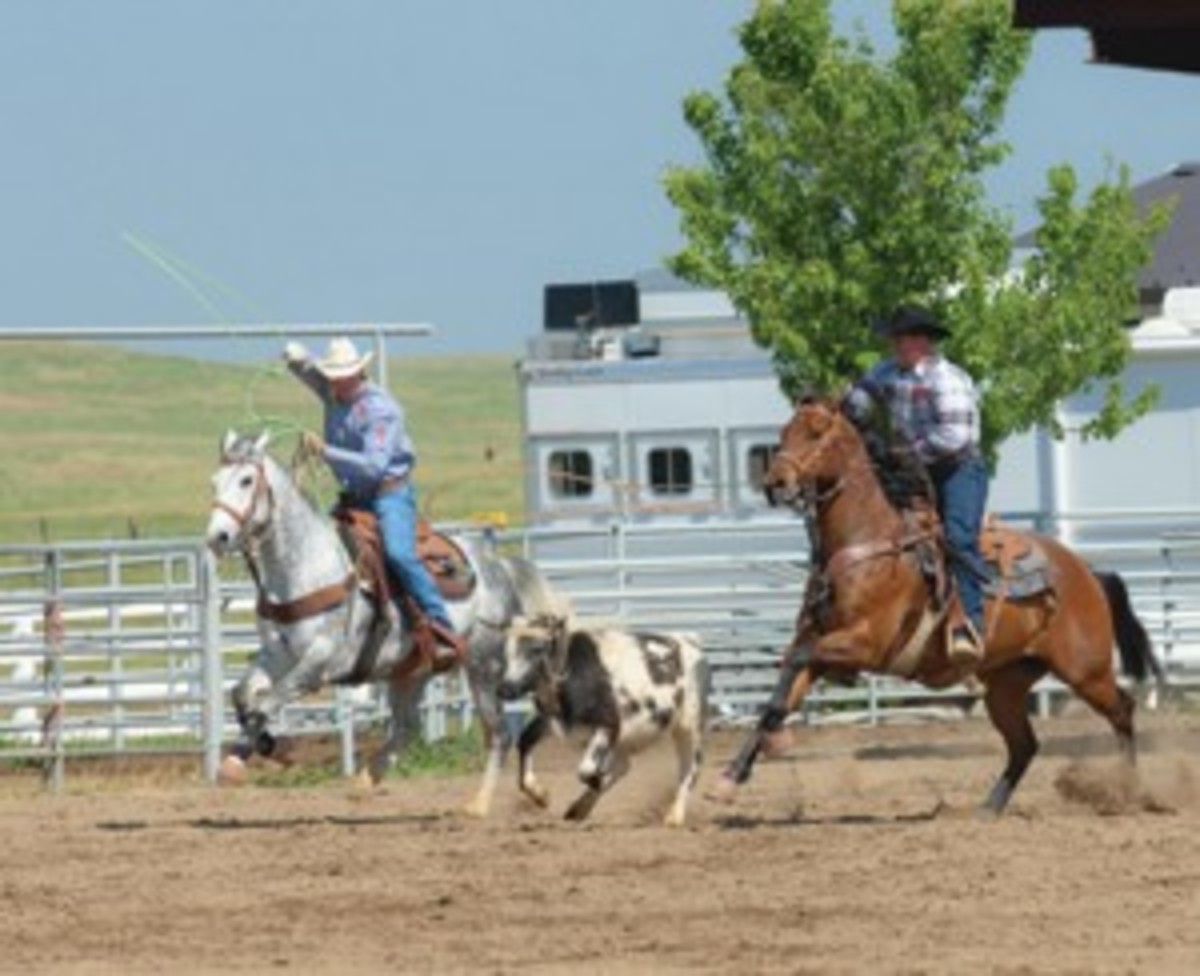When I go do schools, one of the most common questions asked is where I like to ride coming down the arena to set up for the corner. To set up a consistent pattern of making a good corner, where you ride coming down the arena makes a significant impact on what you’re able to do when the steer’s being turned. To try to line up a good shot position-wise after the steer turns is the first thing that I’m concentrating on as it relates to making a successful run.

The first thing that comes into play is the type of turn that you get from your header, which can vary in degree of difficulty, depending on what he does to the steer in the turn. Where your position is riding down the arena can either magnify that degree of difficulty or minimize it.
Your spacing or distance coming down the arena is really the main ingredient that makes it easy for your horse to make a corner and keep striding through the turn smoothly. If you don’t have the proper spacing, it can minimize your horse’s ability by making him make a sharp turn. For instance, if you ride too tight or close to the steer, then when the horse reacts to the steer turning it causes him to make a sharp move or a real quick turn to square up and get on the left side of the steer.
A horse has to almost come to a stop to make that sharp of a turn, so it’s easy to lose momentum in that maneuver. The result is the horse loses momentum, the steer leaves you in the corner and you lose the ability to maintain a fixed position immediately in the turn. So you have to either throw and take whatever shot that gives you, or you’ve got to start building momentum by kicking your horse back up and to the steer. That costs you time in getting your shot set up.
Most of your consistent guys who rope a high percentage of their steers space themselves out to the right of the steer a good 10-15 feet, which provides that spacing. Not riding so high on the steer, where your horse’s nose is even with the steer’s tail or behind it a little bit provides a good angle for the horse to come in and get on the left of the steer in the turn. The width of space out to the right also lets you make the turn with a nice smooth stride, and lets you move through the turn at the same pace as the steer.
Something Allen Bach pointed out to me that he tells students, which is a good point of reference, is that in most standard 16-foot boxes, where you’re sitting in the right side of the box pointing down the arena, when you look over at the steer the position you’re in is a pretty decent position that can be maintained from the start until the steer gets turned. I will widen myself out to the right a little bit more if I have the room to do it, where my horse’s nose is back behind the tail, because that’s about the same distance as when you’re in the box and the steer’s in the chute.
Your position throughout the run depends on what the steer does as he’s running down the arena, and the adjustments you need to compensate for what he does. For instance, a steer might want to move toward the left fence, toward the right fence or break hard straight, then slow up as the header gets to him. You need to adjust accordingly in those situations. You need to have some control on your horse as he breaks and comes down the arena. You have to train him to where he’ll respond to those counter maneuvers, so you can maintain the position you’re wanting to be in going down the arena. That takes work, time and practice. SWR










